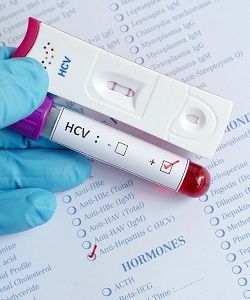Article
There Might Be Too Much Emphasis on Risk Factors for Hepatitis C Screening
Author(s):
Hepatitis C screening based only on risk factors could miss infected people.

It’s no secret that baby boomers (people born from 1946 to 1964) are at an increased risk of hepatitis C. In fact, the Centers for Disease Control and Prevention (CDC) estimate that this population is five times more likely to have the virus. But are other at-risk populations being neglected from testing?
Baby boomers are at a higher risk for hepatitis C, but the reason why isn’t completely understood. Some researchers say that hepatitis C transmission was highest from the 1960s to 1980s; others attribute it more to this group was exposed to infected medical equipment before precautions were put into place. This is why the CDC recommends that all people in this population get tested for the liver virus, even if they don’t have any other risk factors. Beyond baby boomers, people who have ever injected drugs and those who received a blood transfusion or organ donation before 1992 are also advised to get tested.
At the Conference on Retroviruses and Opportunistic Infections (CROI 2017) in Seattle, Washington, researchers from MedStar Health Research Institute in Maryland presented new data on hepatitis C-positive non-baby boomers.
The study examined 329 non-baby boomers tested from July 1, 2015 to June 30, 2015. The case-control analysis did not match controls for age, sex, or race—although clinical studies typically do—because the researchers wanted to observe potential differences.
Eighty participants (1.7%) were hepatitis C antibody positive (Ab+) or indeterminate and compared to the 249 hepatitis C antibody negative (Ab-) controls.
Baseline characteristics for the 329 participants differed a bit based on if they were Ab+ or Ab-. About 55.8% and 45% were female, 48.2% and 36.3% were African American, and 69.1% and 46.3% held private insurance. The average age differed depending if they were in the baby boomers group or not—around 36 years and 75 years between the two antibody groups.

Risk factors that could contribute to hepatitis C infections were documented among the participants. For the Ab+ and Ab- groups, participants had opiate prescriptions (40% and 20.1%), elevated liver function tests (17.5% and 14.5%), drug use (35% and 1.6%), high sexual behavior (6.3% and 16.9%), renal disease (2.5% and 2%), sexually transmitted infections (10% and 10%), and HIV (5% and 2.8%). One participant had a blood transfusion (Ab+), two had cirrhosis (Ab+), and three had alcohol abuse (two Ab+, one Ab-).
About 50% of participants in age clusters 46 to 50 and 71 to 75 tested positive.
“There was a significant interaction for age and opiate prescription use with those over 40 with an opiate prescribed 11x more likely to be hepatitis C Ab+,” the researchers explained. Participants were also more likely to be hepatitis C Ab+ if they had drug use, Medicaid (over private insurance), and were Caucasian (over any other race).
Previous research has found that drug use is a strong indicator of hepatitis C-positive status, and this recent study backs that up. But they found that more non-baby boomers with hepatitis C are Caucasian than African American—which is the opposite among baby boomers.
A total of 18 hepatitis C Ab+ (23%) and 123 hepatitis C Ab- (49%) participants did not have any risk factors indicated in the study.
“Testing non-[baby boomer] patients only on the basis of risk factors has the potential to miss a significant number of hepatitis C Ab+ patients,” the team concluded.




